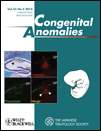
CONGENITAL ANOMALIES
Scope & Guideline
Advancing knowledge on congenital disorders.
Introduction
Aims and Scopes
- Genetic and Molecular Studies:
Research exploring the genetic underpinnings of congenital anomalies, including novel gene variants and their associations with specific syndromes. - Prenatal Diagnosis and Management:
Focus on advancements in prenatal screening techniques and management strategies for pregnancies complicated by congenital anomalies. - Epidemiological Studies:
Investigations into the prevalence, risk factors, and demographic trends related to congenital anomalies across different populations. - Clinical Outcomes and Case Reports:
Detailed case studies highlighting clinical presentations, treatment outcomes, and long-term follow-up of patients with congenital disorders. - Therapeutic Interventions:
Studies evaluating the effectiveness of various treatment modalities, including surgical and pharmacological interventions for congenital anomalies.
Trending and Emerging
- Pharmacovigilance and Drug Safety:
An increase in studies examining the safety of medications during pregnancy and their implications for congenital anomalies indicates a growing concern for maternal-fetal medicine. - Integrated Approaches to Diagnosis:
Emerging themes include the use of advanced imaging techniques and genetic testing for early diagnosis of congenital anomalies, showcasing a trend towards more comprehensive diagnostic strategies. - Public Health and Awareness:
Research focused on public awareness and education regarding congenital anomalies is gaining traction, emphasizing the importance of community engagement in prevention and management. - Maternal Health and Lifestyle Factors:
There is a rising trend in studies exploring the impact of maternal health, lifestyle choices, and environmental exposures on the risk of congenital anomalies.
Declining or Waning
- Environmental Teratology:
Research focusing on environmental factors contributing to congenital anomalies has decreased, possibly due to a shift towards genetic and molecular studies. - Historical Case Studies:
Papers documenting historical cases of congenital anomalies are becoming less frequent, as the focus shifts towards contemporary clinical practices and outcomes. - Surgical Techniques and Innovations:
There is a noticeable decline in the publication of studies solely focused on surgical techniques for congenital anomalies, as the journal emphasizes broader clinical outcomes.
Similar Journals

Molecular Cytogenetics
Empowering Researchers through Open Access Knowledge.Molecular Cytogenetics is a prestigious open-access journal published by BMC, dedicated to advancing the fields of biochemistry, genetics, and molecular biology. Since its inception in 2008, this journal has facilitated prominent research and developments in the cytogenetics domain, featuring innovative studies and reviews that explore the intricate relationship between cellular structures, genetic makeup, and various biological processes. With a robust impact factor and a commendable positioning within Q3 and Q4 categories across multiple relevant disciplines, it provides a vital platform for researchers to disseminate their findings to a global audience. The journal's open-access model ensures that cutting-edge research is readily available to students, professionals, and scholars, promoting free knowledge exchange. Situated in the vibrant landscape of the United Kingdom, Molecular Cytogenetics continues to contribute significantly to scientific progress, solidifying its role as an essential resource for those engaged in the exploration of genetic and cytogenetic inquiry.
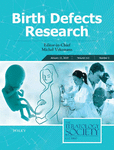
Birth Defects Research
Innovating research for healthier futures.Birth Defects Research is a premier open-access academic journal published by WILEY, dedicated to advancing the field of developmental biology and embryology, with an emphasis on understanding the mechanisms and factors influencing congenital anomalies. Since its establishment, the journal serves as a vital resource for researchers, professionals, and students alike, providing a platform for innovative research and insights in areas including pediatrics, toxicology, and health science. With an impact factor reflecting its commitment to quality, it is positioned in the Q2 and Q3 quartiles across several categories for 2023, demonstrating its relevance and influence within the scientific community. Researchers will find it particularly valuable for disseminating findings and encouraging interdisciplinary collaboration in combatting birth defects and improving child health outcomes. Accessible from the United Kingdom, the journal fosters the free exchange of information, reinforcing its goal to support the global health landscape through knowledge and innovation.

Congenital Heart Disease
Fostering collaboration in congenital heart disease research.Congenital Heart Disease, published by TECH SCIENCE PRESS, is a pivotal academic journal focusing on the complexities of congenital heart conditions. With an ISSN of 1747-079X and an E-ISSN of 1747-0803, this journal serves as a crucial platform for researchers and healthcare professionals engaged in cardiology, pediatrics, and related fields. Established in 2006 and continuing through to 2024, it aims to disseminate insightful research findings and reviews that advance the understanding of congenital heart diseases and their management. The journal currently holds a Q4 classification in cardiology and cardiovascular medicine, with rankings in various medical categories highlighting its dedication to emerging research. Although it does not offer open access, its contributions are vital for professionals seeking to explore innovative strategies and collaborative solutions in congenital heart disease management. As it continues to navigate the evolving landscape of pediatric cardiac health, Congenital Heart Disease is committed to fostering a community of knowledge that impacts both clinical practices and academic inquiry.
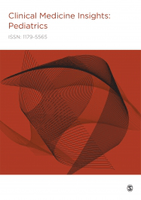
Clinical Medicine Insights-Pediatrics
Advancing Pediatric Health Through Innovative ResearchClinical Medicine Insights-Pediatrics, published by SAGE Publications Ltd, stands at the forefront of pediatric healthcare research, providing an essential platform for the dissemination of innovative findings and clinical advances. As an Open Access journal since 2010, it ensures that high-quality research is accessible to a global audience, fostering collaboration and knowledge-sharing among researchers, healthcare professionals, and educators. Although the journal's H-index and Scopus Ranks are not specified, it remains committed to enhancing understanding and treatment of pediatric conditions by publishing rigorous studies, reviews, and case reports. With a focus on evidence-based practices and clinical insights, Clinical Medicine Insights-Pediatrics plays a pivotal role in addressing the unique health challenges faced by children today, making it an indispensable resource for anyone dedicated to advancing pediatric health.
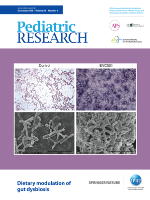
PEDIATRIC RESEARCH
Elevating research to enhance children's well-being.Pediatric Research, published by SpringerNature, is a leading journal in the field of pediatrics, perinatology, and child health. With an impressive impact factor reflecting its stature, this journal has been integral in advancing research since its inception in 1967. With a placement in the Q1 category for Pediatrics, Perinatology, and Child Health, and ranking #30 out of 330 in Scopus, Pediatric Research is recognized for its rigorous peer-review process and commitment to disseminating vital findings that impact child health globally. The journal primarily serves as a platform for researchers, healthcare professionals, and students dedicated to exploring innovative solutions to pediatric health challenges. Although not an open-access journal, it provides valuable insights and research that contribute significantly to improving health outcomes for children. Based in the United States, with a global reach, Pediatric Research remains at the forefront of pediatric innovation and scholarship through 2024 and beyond.

European Journal of Pediatric Surgery Reports
Advancing pediatric surgical excellence.European Journal of Pediatric Surgery Reports is a dynamic publication dedicated to the advancement of pediatric surgical practices and research. Published by GEORG THIEME VERLAG KG, this journal serves as an essential resource for clinicians, researchers, and students in the field of pediatric surgery. Since its inception as an Open Access journal in 2013, it has provided unrestricted access to high-quality research articles, case reports, and reviews, facilitating the rapid dissemination of vital information within the medical community. By illuminating key advancements and innovations in pediatric surgical techniques, the journal plays a crucial role in enhancing patient care and outcomes. By fostering collaboration and knowledge exchange among professionals worldwide, European Journal of Pediatric Surgery Reports aspires to establish a scholarly platform that addresses the challenges and developments unique to pediatric surgical medicine. Situated in Stuttgart, Germany, it upholds stringent editorial standards, ensuring that only the most relevant and impactful studies are featured.
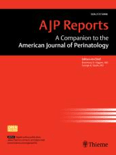
AJP Reports
Connecting the dots in maternal and child health innovation.AJP Reports, published by THIEME MEDICAL PUBL INC, is a distinguished open-access journal that has been making valuable contributions to the fields of Obstetrics and Gynecology and Pediatrics, Perinatology, and Child Health since its inception in 2011. With its ISSN 2157-6998 and E-ISSN 2157-7005, the journal serves as a crucial platform for the dissemination of groundbreaking research and clinical practice advancements. According to the 2023 categorization, it is ranked in the third quartile for Obstetrics and Gynecology and the second quartile for Pediatrics, Perinatology, and Child Health, reflecting its importance in these fields. The journal is committed to accessibility, ensuring that all published studies can reach a broad audience of researchers, practitioners, and students, ultimately fostering collaboration and innovation. As it converges its database from 2014 to 2024, AJP Reports continues to play a pivotal role in enhancing the understanding and management of maternal and child health issues, making it an essential resource for those at the forefront of these vital medical specialties.
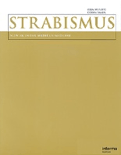
Strabismus
Fostering Dialogue in Strabismus and Eye DisordersStrabismus is a distinguished journal published by Taylor & Francis Inc, dedicated to the field of ophthalmology, with a focus on the diagnosis, treatment, and research surrounding strabismic conditions. Since its inception in 1993, this journal has served as a pivotal platform for advancing knowledge and fostering discussion among researchers and clinicians alike, providing critical insights into the complexities of eye alignment disorders. With a current impact factor reflecting its solid standing in the Q3 quartile of ophthalmology journals, Strabismus continues to rank among the notable publications in its field, achieving a Scopus rank of #85 out of 137. Although it operates without an open access model, the journal is accessible to a broad audience of professionals through institutional subscriptions, ensuring that a wealth of research is available to support clinical practices. By encompassing a wide range of topics, from clinical studies to theoretical analyses, Strabismus aims to enhance understanding and improve patient outcomes, making it an essential resource for those engaged in ocular health and research.
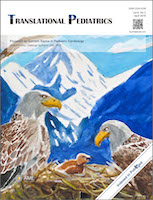
Translational Pediatrics
Empowering Pediatric Care with Groundbreaking Science.Translational Pediatrics is a leading journal in the field of Pediatrics, specializing in bridging the gap between laboratory research and clinical practice. Published by AME Publishing Company in Hong Kong, this journal aims to promote the translation of scientific discoveries into innovative interventions for child health. With its ISSN 2224-4336 and E-ISSN 2224-4344, the journal is accessible to a global audience, enhancing knowledge sharing among researchers, clinicians, and educators. Recognized in 2023 as a Q2 category journal in Pediatrics, Perinatology, and Child Health, it ranks 72nd out of 330 according to Scopus, placing it in the top 22% of its category. With an impactful Convergence of research from 2015 to 2024, Translational Pediatrics is dedicated to providing an essential platform for high-quality studies that advance pediatric care and foster best practices in child health.

ANATOMICAL SCIENCE INTERNATIONAL
Unveiling Innovations in Anatomical ScienceANATOMICAL SCIENCE INTERNATIONAL is a distinguished peer-reviewed journal published by SPRINGER, focusing on the field of anatomy and its applications within the broader spectrum of medical science. With an ISSN of 1447-6959 and an E-ISSN of 1447-073X, this journal provides a robust platform for the dissemination of innovative research and findings from around the globe, featuring studies that span from basic anatomy to advanced clinical applications. As of 2023, it holds a respectable Q2 rank in Anatomy and a Q3 rank in the miscellaneous category of Medicine, reflecting its growing influence and contribution to the field, with Scopus rankings placing it in the 59th percentile of Medicine - Anatomy journals. Although ANATOMICAL SCIENCE INTERNATIONAL is not an Open Access journal, it remains indispensable for researchers, professionals, and students who seek to stay at the forefront of anatomical science research. The journal's ongoing commitment to excellence is evident through its continuous publication, spanning from 2002 and projected through 2024, making it a vital resource for those aiming to advance their knowledge and practice in anatomy.